
Like most root vegetables, beets start out dense and hard, cooking slowly until they grow tender. Cooked beets are most appealing when they are reasonably soft. However, unlike potatoes or parsnips, they do not have to be fully cooked to be safe; after all, grated beets are a classic salad ingredient. Patience pays off when cooking beets, yielding soft, buttery chunks that soak up flavors, and also stand proudly on their own.
Boiled or Steamed
The skin of boiled or steamed beets will get soft enough to rub off with your fingers when the beets are fully cooked. To test for doneness, use a pair of tongs to remove a beet from the pot or the steamer, hold it under cold running water until it is cool enough to touch then try to rub off the skin by applying gentle pressure. If the skin does not rub off easily, return it to the pot and check it again after it has cooked for another five minutes. This method of peeling beets is easier than using a peeler or a paring knife, so it will also cut down your prep time.
Roasted and Ready
When beets are roasted, their skins rub off easily just as they do when beets are steamed or boiled. Unlike boiling or steaming, roasted beets are cooked to reduce moisture and intensify flavor, so running them under cold water is counterproductive. Allow roasted beets to cool until you can handle them comfortably before attempting to rub off their skins.
Peel, Then Poke
You may choose to peel your beets with a paring knife or a good vegetable peeler before cooking them. If you do so, you can tell when peeled beets are fully cooked by poking them with a fork or knife to gauge their softness. They should be at least as soft as a medium-hard cheese such as cheddar. However, if you like your beets very soft, they should yield as easily as room temperature butter. If you're cooking peeled beets whole, make sure to check them for doneness all the way through to the center.
Different, Yet the Same
Although bold red beets are the most commonly used varieties, other varieties such as gold beets and Chiogga beets with pink concentric circles on the inside are also available at farmers' markets and specialty grocery stores. Although these beets may look very different from red beets on the inside, they cook in precisely the same way, and can also be checked the same way for doneness.
Related Articles
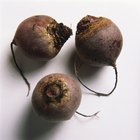
How to Remove Skin From Beets

How to Roast Beets for Canning or ...

How to Grill Carrots

How to Cook Small Dutch Yellow Potatoes

Ways to Cook Radishes

How to Julienne Jicama
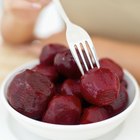
How to Boil Beetroot

How to Tell When Okra Is Ripe

How to Roast Beetroot

How to Blanch & Peel Hazelnuts
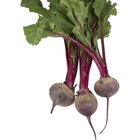
How to Freeze Fresh Beets
How to Make Sweet Potato Baby Food

How to Store Apples
How to Roast Celery

Do You Have to Clean Octopus Tentacles ...

Do You Soak Raw Peanuts in Water Before ...

How to Prepare Hansel Eggplant

How to Cook a Wild African Yam
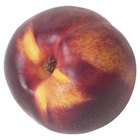
How to Bake Nectarines Like Peaches
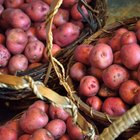
How to Steam Red Potatoes in an ...
References
Writer Bio
Devra Gartenstein is a self-taught professional cook who has authored two cookbooks: "The Accidental Vegan", and "Local Bounty: Seasonal Vegan Recipes". She founded Patty Pan Cooperative, Seattle's oldest farmers market concession, and teaches regular cooking classes.
Photo Credits
Stockbyte/Stockbyte/Getty Images